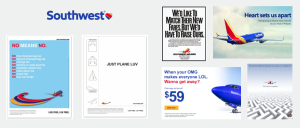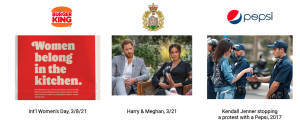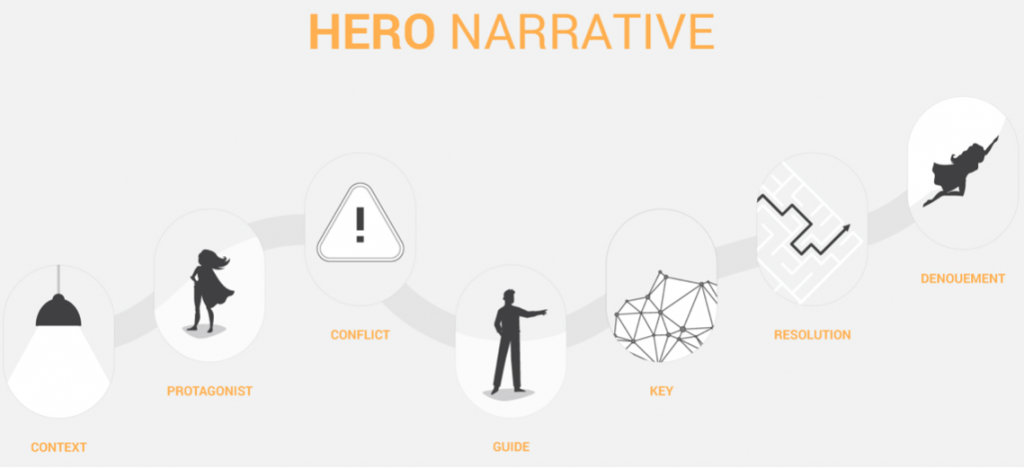WHAT you say is crucially important in building your brand. But so is HOW you say it. We’re talking about Brand Voice.
Truth: Your brand’s voice is a powerful persuader or impeder of your business’ success. We’ve all experienced this: a brand that makes us chuckle or connects with us on a human level – well, we just like them more, and find ourselves wanting to buy what they’re selling. Brands that come off as rigid or arrogant – we want nothing to do with them.
Here’s the thing: the brands we love and gravitate towards? Their brand voice and tone isn’t accidental. There’s a deliberate and methodical exercise in defining the communications playground so content is “on brand,” and the marketing folks can deliver the right brand voice and tone, accurately and consistently.
Let’s dive into brand voice and tone, and how your brand reflect can convey the right voice and tone to engage your customers with intention.
Brand Voice and Brand Tone: The Difference
Brand voice is your brand values and mission and vision. It comes to life in your communications and content. Voice focuses on what is being said and should be very consistent with the content you’re communicating. By having an unchanging voice, your readers will see your brand as clear, reliable and consistent.
Brand tone is how colorful and expressive you are with your brand communications. As communications strategist Kelsey Batschelet puts it, “Voice is your brand personality. Tone is how you express that personality. You’re always you (voice) but how you express yourself to different audiences may vary (your tone).” My caveat to this is you need to be consistent. If you show up in one email blast as hilariously snarky, and then the next time you’re monotonous-serious, you will be off-putting. Strive to create a brand tone that can be flexible but still within the voice that reflects your brand and you want to own.
Let’s look at some examples.
SouthWest Airlines
One of my favorite examples of a brand voice that is fun, approachable and honest is Southwest. Their hilarious “Wanna get away?” campaign has featured people in awkward situations wanting to disappear, and the tone is always deadpan funny. They infuse humor and a touch of snark in their tone, and we love them for it.

Harley Davidson
This brand has mastered an emotive, irreverent and edgy brand tone, while still keeping it approachable and engaging (and their font is exceptional for driving home their point). You automatically feel something, just looking at their communications.

How to Craft Your Brand Voice
Defining your brand voice requires some work. Your goal is to create a filter for your content, so you can ensure consistency and that you’re “on brand.” You’ll want to determine 3-4 descriptors that are genuine, intrinsically already in your communications and reflect how you want your brand to be perceived “when it grows up.” Here’s how you do this.
- Look at your past and current communications: blogs, email blasts, newsletters, articles. Read these as a potential customer would read them, with a focus on brand voice. Now, sift. What content do you love, and why? What are you rejecting, and why? Describe 3-4 characteristics that reflect the brand voice you want, based on the pieces you love. Assess what you value and the voice characteristics you want to keep.
- Turn to your brand values as a guide for your brand voice. What characteristics are emblematic of your brand? What behavior completely defines your brand? Note those values and the characteristics that bring them to life. If one of your brand values is ‘integrity,’ some possible characteristics would be unconvoluted; down-to-earth; and /or uplifting.
- If you’ve recently undergone a rebrand, you’ll also want to convey the ideas in your new brand in your voice and tone. Revisit your brand promise and brand’s essence, and the behavior makes that promise / essence come alive for your customers. Consider the other contextual inputs for your brand, such as your brand archetype, the emotional and functional benefit(s) of your brand, your value proposition and what your customers disproportionately value about your brand. Then (as above), uncover the characteristics that bring those to life and write those down.
Narrow in on three to four characteristics that expressly and instantly convey your brand. These should be an obvious, natural match; your writers shouldn’t be caught off guard or feel like this is a stretch. Create descriptions for these words, with examples, to drive towards the voice you want. Use this checklist against all of your content going forward, so your communications are ‘on brand’ and you’re building your brand with intention.
Your Brand Tone: A Communications Sandbox
With brand tone, you have much more freedom in how you communicate within the parameters of your brand voice. If one of your brand voice’s characteristics is ‘humorous,’ brand tone allows you to choose whether your brand will be slapstick, self-deprecating, witty, punny, sardonic, dark or snarky.
A few factors to take into consideration when deciding on your brand tone:

Your brand tone is the overlap of what’s authentic to your brand, how you want to be perceived, and your clients’ appetite for your tone. Remember that your brand is for your company but importantly also for your clients or customers. If you want to be seen as “irreverent” and your strategy is to drop f-bombs everywhere, that’s fine, but if that doesn’t sit well with your clients, you’ve achieved the wrong outcome.
Having defined your brand voice, you can decide how much liberty to take with your brand tone. Important: tight guidelines to create a safe sandbox for your brand tone (and your communications strategists) to play in. For instance, will you allow cuss words, or resort to *%^#@&! to convey a point? Will you always be witty or cheeky in your copy? Being clear is kind. Being vague is unkind. Set your guidelines and help your writers become the exceptional writers you want working on your brand.
Finally, give you and your team grace. Nearly every major brand has had some communications oopsies: we’re talking about global organizations with some of the most-sought-after writing talent in the world getting it wrong. Give yourselves the opportunity to try new things and learn from any mistakes. In the end, we’re just all human, trying to connect to other humans.

Need help with your brand tone or voice? Reach out to us for a virtual coffee and let’s chat about how we can make your content magnetic to success.


